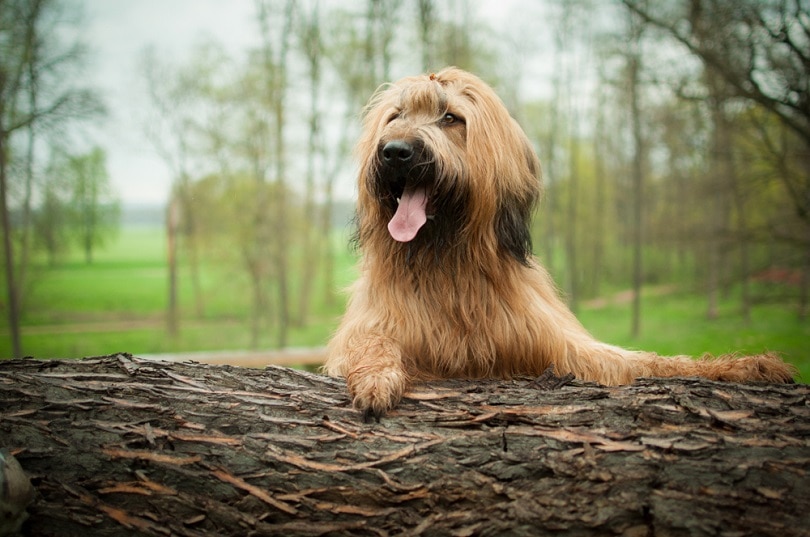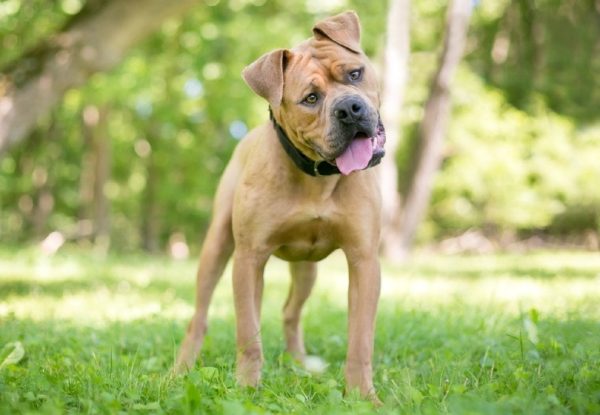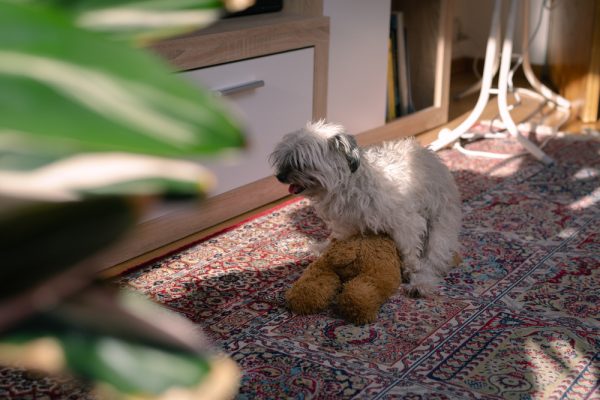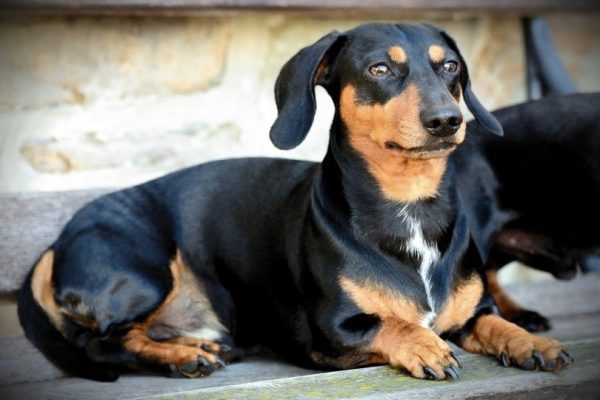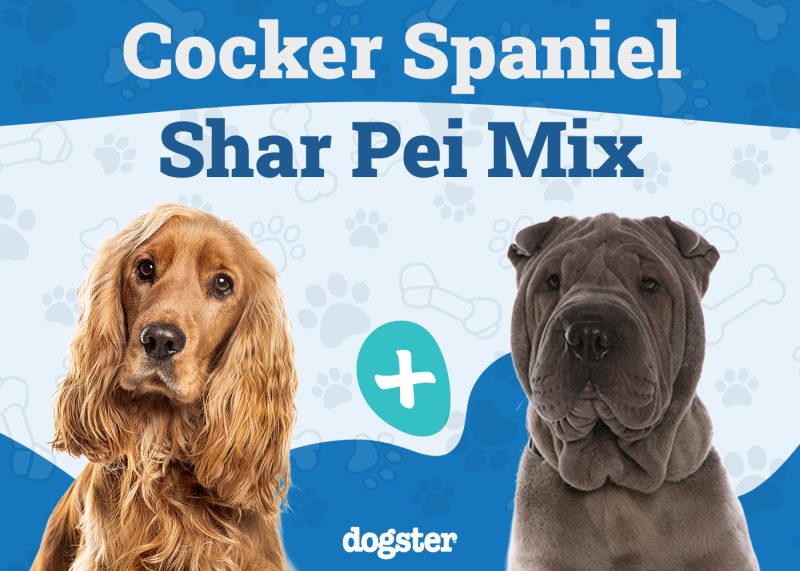In this article
For some, their love of dogs is strong enough that the drooling isn’t a big deal. For others, it’s not something they’re prepared to deal with due to personal preference or allergies. If you are in the latter category but love big dogs, you might consider adopting a dog that doesn’t slobber much.
In this post, we’ll introduce you to some of the possibilities.

How Are Non-Drooling Dogs Classified?
Some breeds are notorious for drooling because of the type of mouth they have. Some dogs have jowls, which collect slobber. Examples include Bloodhounds, Bulldogs, Saint Bernards, Dogue de Bordeaux, and Great Danes. This facial structure is especially common in large breeds.
On the other hand, some breeds are known for being minimal droolers. All breeds drool, especially when they’re eating or drinking or stressed, excited, or have just exercised.
Top 8 Big Dog Breeds That Don’t Drool
1. Afghan Hound
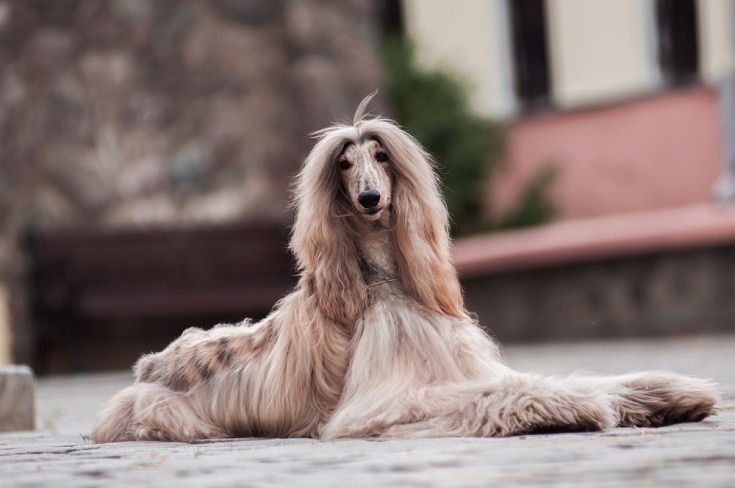
| Origin: | Afghanistan |
| Lifespan: | 12–18 years |
| Height: | 25–27 inches |
| Shedding: | Minimal |
| Temperament: | Dignified, comical, sweet, independent |
As one of the world’s oldest breeds, the Afghan Hound has been around so long that it’s impossible to know precisely when they were developed. We do know, however, that they were developed in the area that is today made up of three countries: Afghanistan, Pakistan, and India. However, Afghan Hounds are most commonly associated with Afghanistan, where they were developed in mountainous regions.
Afghan Hounds aren’t known for being big droolers and don’t shed much, but they need to be brushed regularly to prevent their long coats from getting matted and tangled. The elegant and dignified Afghan Hound exterior hides a sweet nature and a real sense of fun.
2. Doberman Pinscher

| Origin: | Germany |
| Lifespan: | 10–12 years |
| Height: | 24–28 inches |
| Shedding: | Moderate |
| Temperament: | Loyal, alert, affectionate, courageous |
Doberman Pinschers originated in Germany in the 19th century, when they were developed as protection dogs. The idea came from a breeder named Louis Dobermann, a taxman who needed a dog of impressive size and awe-inspiring appearance to make sure people paid up and didn’t give him any trouble on his rounds.
Despite their imposing looks, Dobermans are known for being very affectionate, devoted dogs that get along well with everyone in the family when adequately socialized. They’re moderate shedders but don’t need to be brushed often and don’t tend to get smelly easily. Dobermans also have a low tendency to drool.
3. German Shorthaired Pointer
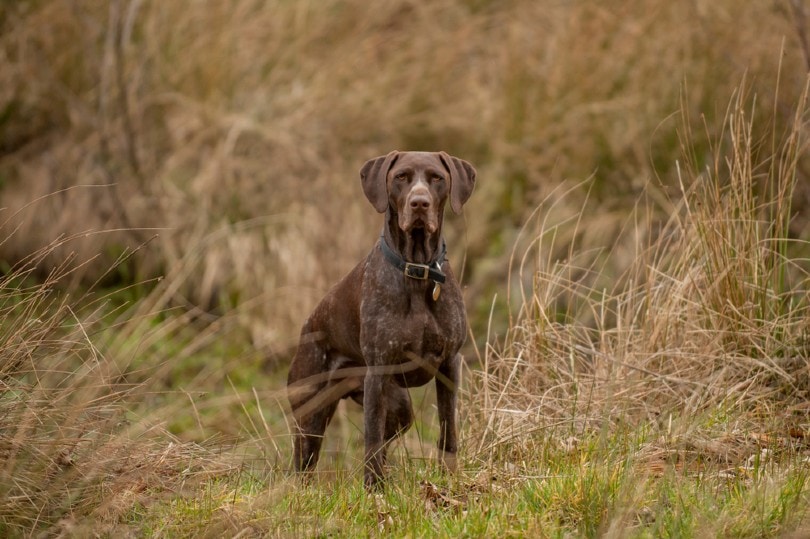
| Origin: | Germany |
| Lifespan: | 12–14 years |
| Height: | Up to 25 inches |
| Shedding: | Moderate |
| Temperament: | Friendly, eager to please, energetic, playful |
German Shorthaired Pointers were initially bred as gun dogs, and after generations of work, the breed was finally considered “finished” in the 19th century. As hunting dogs, GSPs were developed to be agile, energetic, and eager to please—traits today’s GSPs have inherited from their ancestors.
If you are looking for a dog with moderate exercise needs, a GSP isn’t the breed for you. These athletic, smart dogs need a lot of physical exercise and mental stimulation daily. They’re ideal for active owners but are very affectionate, happy-go-lucky dogs, and they’re not big droolers. However, you can expect them to shed moderately.
4. Briard
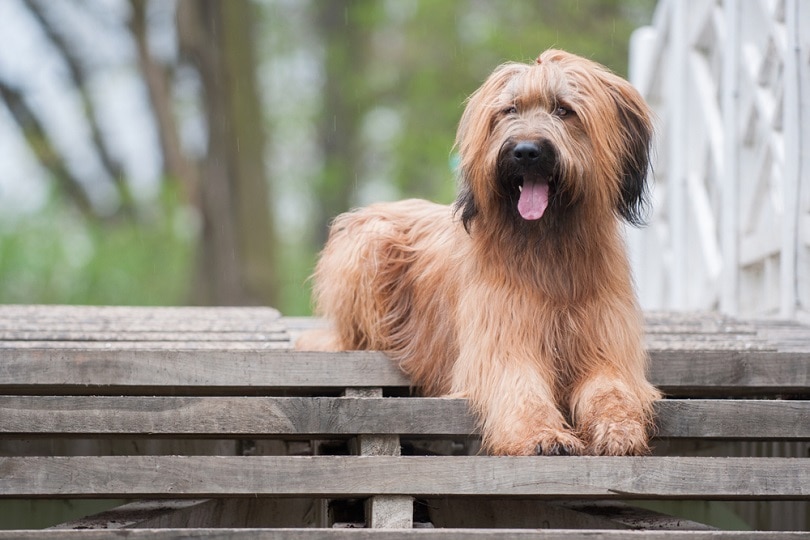
| Origin: | France |
| Lifespan: | 12 years |
| Height: | 22–27 inches |
| Shedding: | Minimal |
| Temperament: | Courageous, loyal, alert, adventurous |
As a French pasture dog, the shaggy Briard was bred as a dependable herder and guardian. The breed’s name was inspired by Brie, a region famous for dairy—especially cheese. Though they may appear heavily set, Briards are remarkably agile and have stamina to spare, so they need to be with a family who will keep them busy.
With a committed family, the Briard is faithful and loving but has an independent streak. Since their long, wavy coats are prone to matting and tangling, Briards need frequent and thorough brushing, but they don’t shed much and rarely drool.
5. Poodle (Standard)
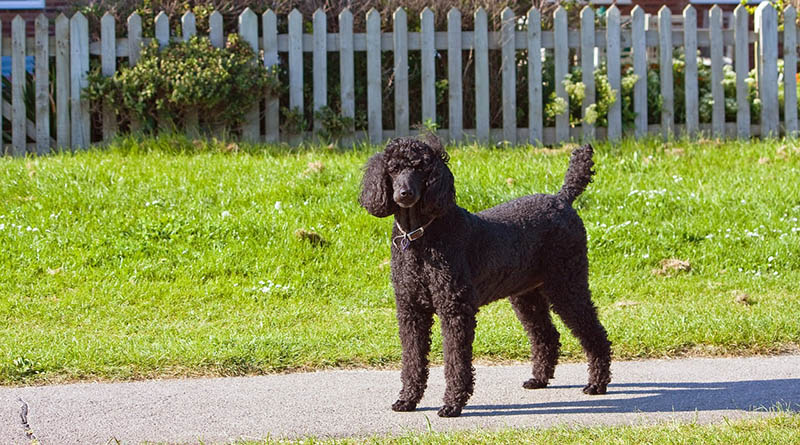
| Origin: | Germany |
| Lifespan: | 10–18 years |
| Height: | Over 15 inches |
| Shedding: | Minimal |
| Temperament: | Intelligent, energetic, versatile, family-oriented |
Though the Poodle is France’s national dog, Germany is the country of origin. Poodles were developed in Germany as water-retrieving dogs, which accounts for their water-resistant curly coats and webbed feet. They come in toy, miniature, and standard varieties, but the Fédération Cynologique Internationale (FCI) recognizes a fourth size: medium (moyen).
According to the American Kennel Club (AKC), standard-sized poodles are over 15 inches tall and can grow up to around 24 inches. Poodles are considered hypoallergenic because they shed so little and are less likely to drool than some other medium-large dogs. Poodles are highly intelligent and are good-humored, spirited, and devoted when socialized.
6. Goldendoodle (Standard)
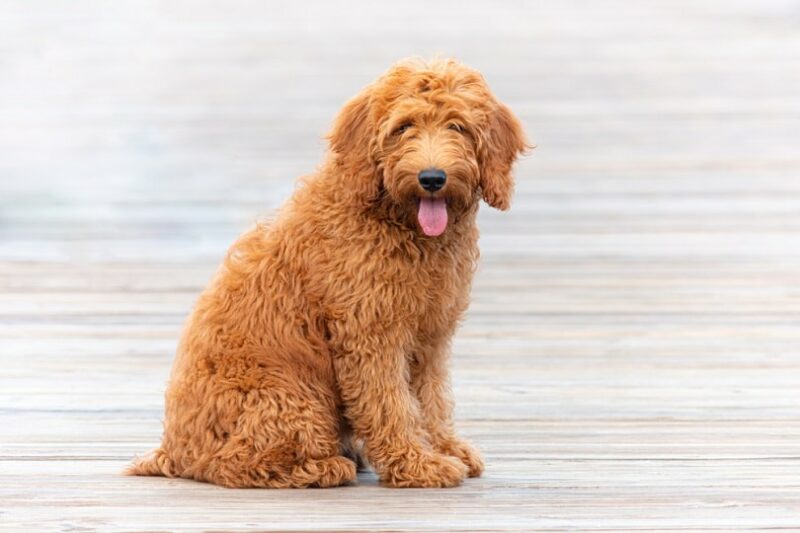
| Origin: | Australia & United States |
| Lifespan: | 10–15 years |
| Height: | 20–24 inches |
| Shedding: | Minimal (usually) |
| Temperament: | Fun-loving, gentle, curious, goofy |
We shouldn’t forget that plenty of mixed breeds are medium or large in size and don’t drool or shed much. The Goldendoodle—a cross between a Golden Retriever and a Poodle—is a fine example of this. Neither the Golden Retriever nor the Poodle are heavy droolers, but the Golden Retriever sheds year-round and more heavily during shedding seasons.
Goldendoodle breeders try to produce a Poodle-like coat, which sheds very little, but some Goldendoodles are straight-haired, so this can vary. Goldendoodles were originally developed as service dogs, but they quickly became popular family companions thanks to their gentle, patient, and fun-loving personalities.
7. Borzoi
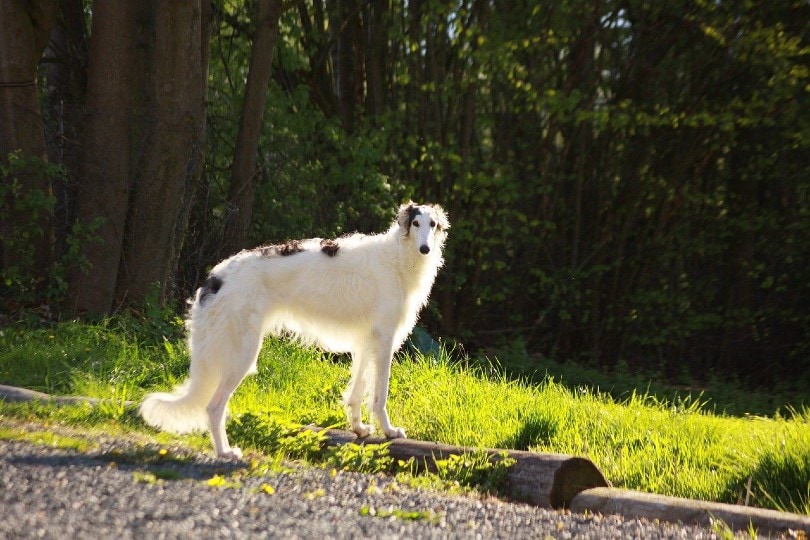
| Origin: | Russia |
| Lifespan: | 9–14 years |
| Height: | At least 26 inches |
| Shedding: | Moderate to heavy |
| Temperament: | Majestic, calm, elegant, independent |
The magnificent Borzoi is from Russia, where they were commonly put to work as wolf hunters during the Romanov period. They were valued by the Russian royals, even to the extent that they were occasionally offered as special gifts by the Tzar. Queen Victoria of England may have been the recipient of a Borzoi, which could explain how they came to Britain.
Appearance-wise and in manner, this gigantic hound truly lives up to their regal reputation. After all, you can’t expect such a royal dog to be a big drooler! However, they shed a moderate to heavy amount. The Borzoi is quiet and dignified, with plenty of independence but a lot of love to give.
8. Irish Wolfhound
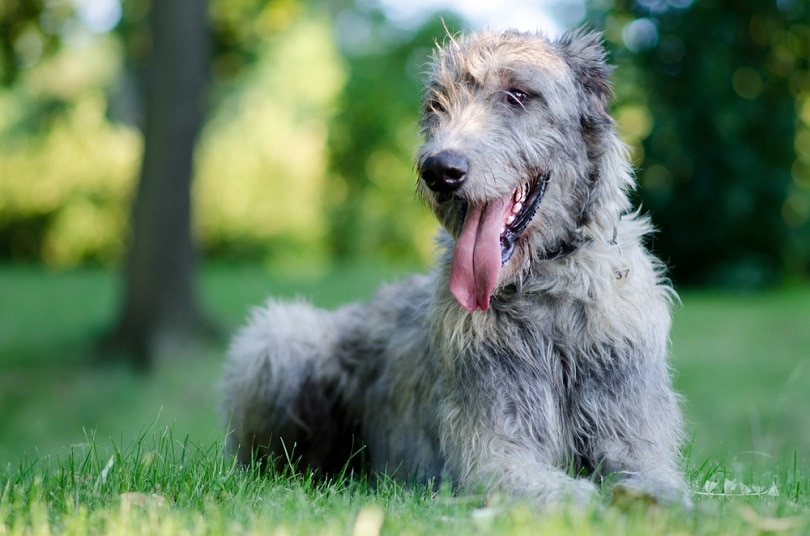
| Origin: | Ireland |
| Lifespan: | 6–10 years |
| Height: | 28–35 inches |
| Shedding: | Moderate |
| Temperament: | Graceful, calm, sensitive, loving |
The Irish Wolfhound is another ancient breed that was around before the Roman conquest of Britain. Like the Borzoi, Irish Wolfhounds once specialized in wolf hunting in addition to hunting large game. Today, however, the breed is one of the gentle giants of the dog world with a graceful, calm disposition, but their hunting instincts and prey drive are still present.
You were probably awe-struck if you have ever been lucky enough to meet an Irish Wolfhound. Appearing to be around the same size as a small pony as a dog, a male Irish Wolfhound is at least 32 inches tall, though females are slightly shorter. They do not drool much, and they shed moderately year-round.

Conclusion
And there we have it—eight very lovely and large breeds (and mixed breeds) that aren’t heavy droolers. If you would like a big dog to join your family, we recommend looking into adoption from a shelter. Shelters are full of pure and mixed breeds waiting for the perfect home.
Featured Image Credit: kyliskova.cz, Shutterstock
